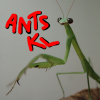I don't understand what you mean from nymph. Pheidole species, like all other ants undergo complete metamorphosis. Meaning egg —> larva —> pupa —> adult. Meaning no nymphs. If you mean a white or yellow young worker, there is no way to distinguish between the older and younger once the younger ones darken in coloring. Apart from the separate castes : major, minor, reproducing gyne, virgin gyne, drones.
Sent from my CPH2201 using Tapatalk
Young ant keeper with a decent amount of knowledge on local ant species.
YouTube:
https://m.youtube.co...uKsahGliSH7EqOQ (It's pretty dead. Might upload again soon, don't expect my voice to sound the same though.)
Currently kept ant species, favorites have a star in front of their names (NOT in alphabetical order, also may be outdated sometimes):
★ Camponotus irritans inferior, ★ Ooceraea biroi, Pheidole parva, ★ Nylanderia sp., ★ Paraparatrechina tapinomoides, Platythyrea sp., Anochetus sp., Colobopsis sp. (cylindrica group), ★ Crematogaster ferrarii, Polyrhachis (
Myrma)
cf. pruinosa, Polyrhachis (Cyrtomyrma) laevissima, Tapinoma sp. (formerly
Zatapinoma)
Death count: Probably over a hundred individual queens and colonies by now. I cannot recall whatsoever.
















